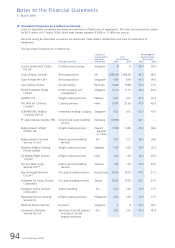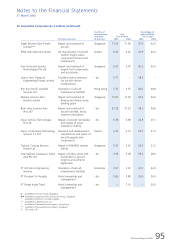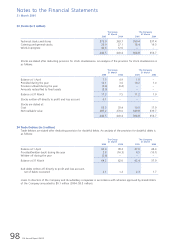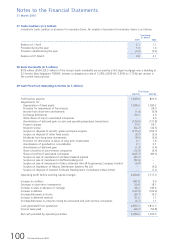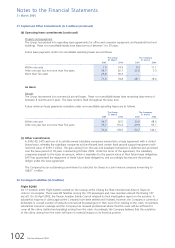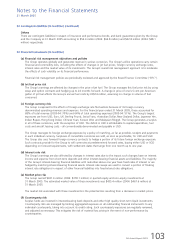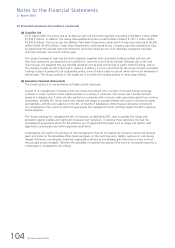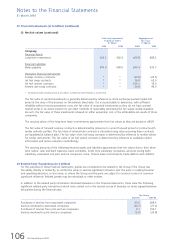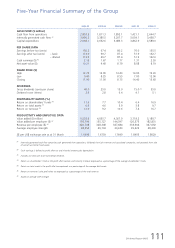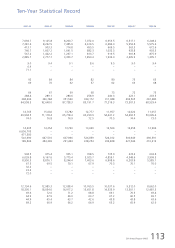Singapore Airlines 2005 Annual Report Download - page 106
Download and view the complete annual report
Please find page 106 of the 2005 Singapore Airlines annual report below. You can navigate through the pages in the report by either clicking on the pages listed below, or by using the keyword search tool below to find specific information within the annual report.104 SIA Annual Report 04/05
Notes to the Financial Statements
31 March 2005
CC
MOD: CN1323
M Y
C K
While every effort has been taken to carry out instruction to customers satisfaction
NO RESPONSIBILITY liablilty will be accepted for errors
CUSTOMERS ARE THEREFOREURGED TO CHECK THOROUGHLY BEFORE
AUTHORISING PRINTRUNS
DALIM
1 2 3 4 5 6 7 8 9 10 OK TS
CC196777 DLMAC13 10.06.2005 150#
13col
33 Financial Instruments (in $ million) (continued)
(g) Liquidity risk
At 31 March 2005, the Group had at its disposal cash and short-term deposits amounting to $2,840.2 million (2004:
$1,518.5 million). In addition, the Group had available short-term credit facilities of about $1,417.1 million (2004:
$1,565.8 million). The Group also has Medium Term Note Programmes under which it may issue notes up to $1,500
million (2004: $1,500 million). Under these Programmes, notes issued by the Company may have maturities as may
be agreed with the relevant financial institutions, and notes issued by one of its subsidiary companies may have
maturities between one month and ten years.
The Group’s holdings of cash and short-term deposits, together with committed funding facilities and net cash
flow from operations, are expected to be sufficient to cover the cost of all firm aircraft deliveries due in the next
financial year. It is expected that any shortfall would be met by bank borrowings or public market funding. Due to
the necessity to plan aircraft orders well in advance of delivery, it is not economical for the Group to have committed
funding in place at present for all outstanding orders, many of which relate to aircraft which will not be delivered for
several years. The Group’s policies in this regard are in line with the funding policies of other major airlines.
(h) Derivative financial instruments
The Group’s policy is to use derivatives to hedge specific exposures.
As part of its management of treasury risks, the Group has entered into a number of forward foreign exchange
contracts to cover a portion of the surplus position in a variety of currencies. The Group uses forward contracts
purely as a hedging tool. It does not take positions in currencies with a view to make speculative gains from currency
movements. Similarly, the Group enters into interest rate swaps to manage interest rate costs on its financial assets
and liabilities, with the prior approval of the BFC or Boards of Subsidiaries. Other treasury derivative instruments
are considered on their merits as valid and appropriate risk management tools, and they require the BFC’s approval
before adoption.
The Group’s strategy for managing the risk on fuel price, as defined by BFC, aims to provide the Group with
protection against sudden and significant increases in jet fuel prices. In meeting these objectives, the fuel risk
management programme allows for the judicious use of approved instruments such as swaps and options with
approved counterparties and within approved credit limits.
As derivatives are used for the purpose of risk management, they do not expose the Group to market risk because
gains and losses on the derivatives offset losses and gains on the matching asset, liability, revenues or costs being
hedged. Moreover, counterparty credit risk is generally restricted to any hedging gain from time to time, and not
the principal amount hedged. Therefore the possibility of material loss arising in the event of non-performance by a
counterparty is considered to be unlikely.


